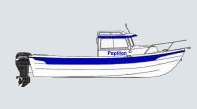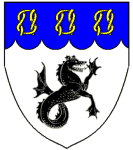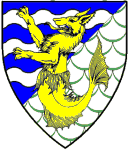| View previous topic :: View next topic |
| Author |
Message |
Doryman
Joined: 03 Oct 2006
Posts: 3807
City/Region: Anacortes
State or Province: WA
C-Dory Year: 2006
C-Dory Model: 255 Tomcat
Vessel Name: Lori Ann
Photos: Lori Ann
|
 Posted: Fri May 25, 2007 11:28 pm Post subject: How did he find the problem? Posted: Fri May 25, 2007 11:28 pm Post subject: How did he find the problem? |
 |
|
OK, color me electrically challenged.
The batteries on my TC went dead after I got back from Lake Powell. I plugged the boat into shore power, but no joy. Called in the calvary (marina mechanic) who quickly determined that the problem was a blown fuse between the battery charger and the battery.
How would someone go about trouble-shooting that kind of situation? Would checking all the fuses be a first step or would some kind of reading on the multimeter reveal the direction to take?
Related question: how would I best go about figuring out what is running my battery down when at dock and not plugged into shore power?
I know that a lot of troubleshooting is probably intuition and experience, but I need to start somewhere!
Thanks,
Warren
_________________
Doryman
M/V Lori Ann
TomCat 255, Hull #55, 150 Yamahas
Anacortes, WA
 |
|
| Back to top |
|
 |
Papillon
Joined: 31 Mar 2005
Posts: 949
City/Region: DeBary, Fl. *On the St. John's River*
State or Province: FL
C-Dory Year: 1993
C-Dory Model: 22 Angler
Vessel Name: Papillon
Photos: Papillon
|
 Posted: Fri May 25, 2007 11:51 pm Post subject: Posted: Fri May 25, 2007 11:51 pm Post subject: |
 |
|
Hello Warren,
I could tell you, but then I would have to "charge ya". Now if I were you I would have asked the guy you had there before you paid him.
But in the mean time I suggest you get yourself a copy of the " The 12 Volt Bible " .... http://www.mhprofessional.com/product.php?cat=132&isbn=0071392335
It is worth every cent you pay for it.
Good Luck
_________________
Mike Taylor
330-936-1030

1993 Angler-02' 115 Suzuki 4 Stroke |
|
| Back to top |
|
 |
Bill.Secure
Joined: 26 Aug 2006
Posts: 118
City/Region: Edgewater - Turkey Point
State or Province: MD
C-Dory Year: 2007
C-Dory Model: 25 Cruiser
Vessel Name: Barnacle Bill
|
 Posted: Sat May 26, 2007 12:32 am Post subject: Fuse size may be too low Posted: Sat May 26, 2007 12:32 am Post subject: Fuse size may be too low |
 |
|
Look at the manual for your charger and see what size fuse is specified. On my 2007 CD-25 the factory had used 5 and 10 amp fuses for 5 and 10 amp circuits rather than the 15 amp fuses specified by the charger manual.
Remember also that each or the positive wires going from the charger to the battery has two fuses, one at the charger end and the other perhaps 6-10 inches from the battery. Both fuses should be the size specified by the charger manual.
About six weeks ago I e-mailed the factory they were using a fuse size substantially less than that specified by the manual and my e-mail was forwarded to their production supervisors.
Bill
Edgewater, MD |
|
| Back to top |
|
 |
TyBoo
Joined: 23 Oct 2003
Posts: 5328
City/Region: Warrenton
State or Province: OR
C-Dory Year: 1996
C-Dory Model: 25 Cruise Ship
Vessel Name: TyBoo
Photos: TyBoo
|
 Posted: Sat May 26, 2007 12:55 am Post subject: Posted: Sat May 26, 2007 12:55 am Post subject: |
 |
|
Warren, the biggest part of the troubleshooting is experience. And now if the same should happen again, or if someone else should ask on here what could be causing a similar problem, you'll be the go-to guy.
If it does happen again even with using the specified fuse, then you need to figure out why and you'll be that much better at it the next time.
_________________
TyBoo Mike
Sold: 1996 25' Cruise Ship
Sold: 1987 22' Cruiser |
|
| Back to top |
|
 |
Larry H
Joined: 02 Nov 2003
Posts: 2041
City/Region: Tulalip,
State or Province: WA
C-Dory Year: 1991
C-Dory Model: 22 Cruiser
Photos: Nancy H
|
 Posted: Sat May 26, 2007 2:52 am Post subject: Posted: Sat May 26, 2007 2:52 am Post subject: |
 |
|
Warren,
If you have a digital voltmeter (part of a digital multimeter), you can check the voltage across the battery in question. Turn the meter on, set the selector switch to DC volts, and put the red lead of the meter to the positive battery terminal and black lead to negative. Now read the display.
The voltage reading can tell you whats going on.
Less than 12.0 volts, discharged or low (dead) battery.
12.2 volts means a 50% discharged battery.
12.6 volts means a fully charged battery.
12.8 to 13 to 14 volts means the battery charger is charging the battery. (assuming the charger is on and has 120 volt power, and the fuses are good)
There is more to fully using a meter, but that is a basic start.
_________________
Larry H

A C-Brat since Nov 1, 2003
Ranger Tug 27 ex 'Jacari Maru' 2017 - 2022
Puget Trawler 37 ex 'Jacari Maru' 2006-2017
1991 22' Cruiser, 'Nancy H'--1991-2006 |
|
| Back to top |
|
 |
iggy
Joined: 17 Feb 2006
Posts: 245
City/Region: Hillsboro, OR
State or Province: OR
Vessel Name: Edward Gallaher
|
 Posted: Sat May 26, 2007 3:37 am Post subject: Posted: Sat May 26, 2007 3:37 am Post subject: |
 |
|
The wording of your question suggests that you're not real sure what a multimeter (DMM; digital multimeter) will do for you. This has been discussed before, but the short answer is: Ya just gotta have one!
Now, you can get in trouble hooking the wrong things up, e.g. a shorted out 12-V can cause a world of hurt. But there are ways to learn how to use them safely. You can buy an inexpensive DMM from Radio Shack for about $30; I have a very small one (deck of cards) that I carry everywhere. Prices, features, and durability go up considerably from there; Fluke meters are renowned by professionals, but you'll pay for them.
For starters, spend $10 more at the Shack and buy a few small batteries (alkaline; NiMH; 1.5V; 9V). You'll find that the actual voltages differ from one type to the other. Try some older batteries (from a flashlight) and measure the voltages.
Buy a few little switches. A single toggle switch will show you how the continuity tester works. A single-pole double-throw (SPDT) or double-pole double-throw (DPDT) will illustrate how the DMM can help you determine what is inside a 'black box', i.e. which lead is connected, and/or disconnected, when the switch is thrown.
Also, buy a variety of cheap resistors of different values. Use the ohm-meter to measure the resistances. These simple tests can all be conducted with minimal voltages and currents, in perfect safety. You'll find that switch resistances vary from virtually zero (closed), to infinity (open). It gets more interesting when you test an old corroded switch, and find that even when closed, there is a significant resistance (BAD). This resisistance can lead to heat build up, and further problems down the line.
These simple exercises will take a lot of the stress out of working on real systems, but be sure you get further advice before working on any higher voltages or currents. They can bite!
iggy |
|
| Back to top |
|
 |
Sea Wolf
Joined: 01 Nov 2003
Posts: 8650
City/Region: Redding
State or Province: CA
C-Dory Year: 1987
C-Dory Model: 22 Cruiser
Vessel Name: Sea Wolf
Photos: Sea Wolf
|
 Posted: Sat May 26, 2007 4:26 am Post subject: Posted: Sat May 26, 2007 4:26 am Post subject: |
 |
|
iggy-
Great suggestions from a real teacher!
Joe.
_________________
Sea Wolf, C-Brat #31
Lake Shasta, California
  
"Most of my money I spent on boats and women. The rest I squandered'. " -Annonymous |
|
| Back to top |
|
 |
Doryman
Joined: 03 Oct 2006
Posts: 3807
City/Region: Anacortes
State or Province: WA
C-Dory Year: 2006
C-Dory Model: 255 Tomcat
Vessel Name: Lori Ann
Photos: Lori Ann
|
 Posted: Sat May 26, 2007 6:18 am Post subject: Posted: Sat May 26, 2007 6:18 am Post subject: |
 |
|
Thanks, guys. You all were very helpful but Iggy came closest to addressing my real questions. Appreciate the suggestions from TyBoo and Papillion as well.
Warren |
|
| Back to top |
|
 |
Byrdman
Joined: 06 Nov 2003
Posts: 3329
City/Region: Cumberland River, Clarksville,
State or Province: WA
Vessel Name: " ? " After Rename Ceremony
Photos: FreeByrd and C-Byrd
|
 Posted: Sat May 26, 2007 9:57 am Post subject: Posted: Sat May 26, 2007 9:57 am Post subject: |
 |
|
Good Stuff Guys. Now... add DMM and one of those thermal lazer gigs to the wish list...and the thermal lazer gig checks da heat on da wheel bearings and does not get the always present grease spin gunk on ya..
_________________
Patrick Byrd "Byrdman"
Cumberland River TN home waters Puget Sound Summers.
Miss B - CD22A, Aug 2018
C-Byrd, CD18A, Hull #14 sold again.. May 2020
C-Byrd, CD18A, Hu #14 - Bought her again - May16
Aloysius, Sold to Brother Mike Mar16
Aloysius, Hull # 440 RF-246
C-Byrd, CD18A, Hull #14 Sold May09
TC24, Hull #51, Sold Feb06
CD16A, Sold Dec03
Never Deny Yourself The Pleasure of Helping Others. |
|
| Back to top |
|
 |
C-WEED
Joined: 14 Mar 2004
Posts: 338
City/Region: New Brockton
State or Province: AL
C-Dory Year: 2000
C-Dory Model: 22 Cruiser
Vessel Name: C-Weed
Photos: C-WEED
|
 Posted: Sat May 26, 2007 10:41 am Post subject: Posted: Sat May 26, 2007 10:41 am Post subject: |
 |
|
A couple more things:
When you get the DMM start your engines (One at a time on the muffs or in the water). Check for voltage increase at the battery after each engine is started one at a time. This tells you the charging system of each engine is working. Unless you left a light on to run down your battery's they shouldn't be dead.
Would also recommend the inexpensive 12 volt trouble light to complement the DMM. It just has a ground wire and a metal probe. The light in the handle lights to indicate voltage when you probe along a 12 volt circuit looking for a short. Automotive spade type fuses can be checked without removing them from the socket if power is present.
On the DMM make sure it has an audible beeper when in the continuity mode. This will simply beep to let you know circuits are complete. Very handy when chasing shorts, burned out light bulbs, fuses, corrosion and such.
_________________
Chris |
|
| Back to top |
|
 |
Bill.Secure
Joined: 26 Aug 2006
Posts: 118
City/Region: Edgewater - Turkey Point
State or Province: MD
C-Dory Year: 2007
C-Dory Model: 25 Cruiser
Vessel Name: Barnacle Bill
|
 Posted: Sat May 26, 2007 10:59 am Post subject: Digital Mulitmeter Posted: Sat May 26, 2007 10:59 am Post subject: Digital Mulitmeter |
 |
|
I make this post with some trepidation as I suspect some of the other folks have far more sophisticated methodologies for finding unwanted electrical drains, but this method has been useful for me. I'd much prefer a volt based than an amp based method, but I can't see any other way to do this.
I have used a digital multimeter's ammeter scale to do the type trouble shooting you are indicating you would like to do. I start by taking a battery "off-line" and then measure the current drain from the remaining on-line battery when I believe all electrical components are either turned off or not operating. In my case I found a minor current draw at the battery.
Then I went through all of the electrical components on-board that seemed candidates, doing them one at a time measuring current usage. I did this at individual fuses by pulling a fuse and then measuring the current draw where the fuse had been even though the component using the fuse was ostensibly off. The boat's wiring diagram was very helpful in this endeavor.
It was interesting seeing how many components had small current draws even though they were turned off or not operating, bilge pumps with float switches, for example. The battery charger itself drew some small amount of current. This was a tedious but instructive exercise. You could find, for example, that the current draw by the battery charger was large enough to be significant and that it was discharging your batteries (i.e. defective battery charger).
I did this exercise on my CD-25 because even when everything was turned off, I was still able to see a tiny spark when I disconnected and connected a battery (after both batteries were off line and everything was turned off). I have surmised (but never proved absolutely) that the tiny spark occurred because of the very small current draws by the bilge pumps, the battery charger, and the Wallas stove (the smallest of them all). When I added up the amperage I measured on these devices, it approximated the amperage I measured at the battery for the totality of the current drain (I had missed the shower pump and never went back and checked it out). The spark was visible because 12 volts were momentarily crossing a very small gap. It was tiny because the amperage was so low.
If you try this approach, you need a digital multimeter with a sufficiently high ammeter scale to process the largest current reading you expect to see. When you think you have a current drain and don't know where it is or how high it might be, this isn't an easy question. I personally prefer a meter that can handle up to ten amps DC even though most of the readings I expect to see may be substantially less than one amp. Often the ten amp scale uses separate meter connections. You might start at the battery using the ten amp scale, see that the current draw is less than a tenth of an amp, and then switch to the milliamp scales on your meter for all further work. You also need probes that can easily probe the female fuse sockets (or break a fuse and turn the broken fuse into a probe by soldering connections to it).
Bill
Edgewater, MD |
|
| Back to top |
|
 |
thataway
Joined: 02 Nov 2003
Posts: 21357
City/Region: Pensacola
State or Province: FL
C-Dory Year: 2007
C-Dory Model: 25 Cruiser
Vessel Name: thataway
Photos: Thataway
|
 Posted: Sat May 26, 2007 8:30 pm Post subject: Posted: Sat May 26, 2007 8:30 pm Post subject: |
 |
|
Lots of good suggestions. Just part of the learning curve being a self sufficient boater:
There are some sites on the internet which tell how to use a digital volt meter such as:
http://www.boatsafe.com/nauticalknowhow/electricity2.htmf
http://mechatronics.mech.northwestern.edu/design_ref/tools/multimeter.html
Like the others, I carry a digital multi meter in each vehicile, RV, boat etc.
I also have a set of aligator chips, a long length of wire so I can bypass areas, or make measurements over a larger area, and carry a small U 1 battery (garden tractor--I happen to use an AGM), so I can by pass parts of ciruits if necessary and have a separate power supply (this same battery will start engines up to 300 hp if necessary).
It is also a good idea to have a small potted (sealed in epoxy) battery charger--I use a Guest GUS2606A on any boat, in case the primary charger goes out.
When looking at batteries, you want to measure DC voltage between the plus and minus terminals. (fortunately most DMM are not subject to reverse polarity--and will indicate if the plus and neg leads are reversed.
At "rest" a 12 volt battery will read from 12.2 volts (50% discharged) to 12.6 volts (fully charged). When turn on the battery charger, the voltage will slowly go up to about 14.4 volts. The alternator on the outboards also put out about 14.4 volts. So the battery will go up to this voltage, then slowly taper off.
To test for battery drain, you need to use the amp meter part of the DMM.
The volt meter will read in series with the battery and the positive lead to the load. Most boats there will be no load, or a small load of a few milliamps which is the memory of a sterio. As you put more load on the battery--like lights, fans, the Wallas stove, there will be more current draw. Most multimeters have a limit of the amperage measurement, and it is one amp on the primary circuit. There is often another circuit, with a separte plug for the positive lead which is fused and good for up to 10 amps. If you need to measure more current than this, either a meter made for larger current must be used, or a shunt which takes the major load, the the DMM measures a portion of this and one can extrapolate to the full current draw.
The measure of continuity and resistance is via another part of the meter. You can use this part of the meter for checking fuses and light bulbs--they will have virtually no resistance.
_________________
Bob Austin
Thataway
Thataway (Ex Seaweed) 2007 25 C Dory May 2018 to Oct. 2021
Thisaway 2006 22' CDory November 2011 to May 2018
Caracal 18 140 Suzuki 2007 to present
Thataway TomCat 255 150 Suzukis June 2006 thru August 2011
C Pelican; 1992, 22 Cruiser, 2002 thru 2006
Frequent Sea; 2003 C D 25, 2007 thru 2009
KA6PKB
Home port: Pensacola FL |
|
| Back to top |
|
 |
williamsdf
Joined: 18 Nov 2005
Posts: 5
City/Region: Riverview
State or Province: FL
C-Dory Year: 2003
C-Dory Model: 25 Cruiser
Vessel Name: Quixote
|
|
| Back to top |
|
 |
digger
Joined: 02 Nov 2003
Posts: 496
City/Region: Spokane
State or Province: WA
C-Dory Year: 1993
C-Dory Model: 22 Angler
Vessel Name: C-Sik
Photos: Snoopy-C
|
 Posted: Mon Mar 21, 2011 7:13 pm Post subject: Posted: Mon Mar 21, 2011 7:13 pm Post subject: |
 |
|
I carry aligator "clips"...Don't know what the chips would do unless they were dry and were for fire starting | Quote: | | I also have a set of aligator chips |
|
|
| Back to top |
|
 |
Matt Gurnsey
Dealer
Joined: 11 Nov 2008
Posts: 1532
City/Region: Port Orchard
State or Province: WA
Photos: Kitsap Marina
|
 Posted: Mon Mar 21, 2011 7:26 pm Post subject: Posted: Mon Mar 21, 2011 7:26 pm Post subject: |
 |
|
Warren-
On your boat, the first clprit for battery drain will be the CO detectors- one in the berth and one at the dash. These are always on when the battery switch is on.
You don't mention if the battery switch was left on.
The automatic side of the bilge pumps are always on, even with battery switch off. You should be able to hear a pump if it's running, but on the tomcat it's down in the hull and might be quiet enough to miss. Debris can make a pump stick "on".
As far as the multimeter- check the battery with the charger off, and then with the charger on. You should see an increase in voltage to indicate the charger is working- I presume your mechanic did that, and the started backwards from the battery to the charger.
Check the battery connections for any wires other than the main cables and see what they are powering, as any of these will be "hot" even with battery switches off.
_________________
Matt Gurnsey
Kitsap Marina
www.kitsapmarina.com
360-895-2193
(888) 293-7991 |
|
| Back to top |
|
 |
|
|
You cannot post new topics in this forum
You cannot reply to topics in this forum
You cannot edit your posts in this forum
You cannot delete your posts in this forum
You cannot vote in polls in this forum
You cannot attach files in this forum
You cannot download files in this forum
|
|

 Search
Search Private Messages
Private Messages Profile
Profile Log in
Log in Register
Register Help
Help





